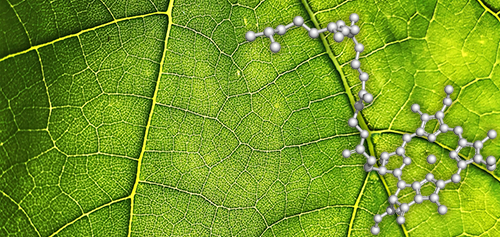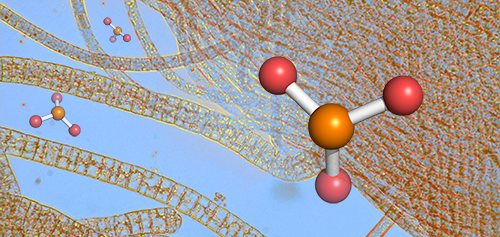I am an enzymologist and biophysist, exploring how nature’s nanomachines drive the chemical reactions that sustain life. I’ve used these skills to understand how plants turn green, how to stabalize artifical proteins and how marine organisms harvest scarce elements in the ocean.
Chlorophyll Biosynthesis

I spent 12 years studying the enzymes that construct arguably the most important molecule on Earth, chlorophyll. Billions of tonnes of this molecule are produced annually, but only until recently did we uncover every single step in the process. I discovered key mechanistic insights into how the enzymes perform their transformations, combining biophysics, enzymology and structural biology to understand the chlorophyll metabolon.
Phosphorus uptake in bacteria

Phosphorus is a vital element for all life, it makes up the back bone to DNA, life uses the bond between oxygen and phosphorus to power many chemical reactions, and it provides the buffering environment in our cells – but it can be difficult to find in the ocean. Marine bacteria have developed specialised machinery to scavage as much phosphorus as possible – and I’ve been exploring how this works.
Publication list
Published in Nature Communications, 2021
Access paper here
Recommended citation: Andrew Murphy, David Scanlan, Yin Chen, Nathan Adams, William Cadman, Andrew Bottrill, Gary Bending, John Hammond, Andrew Hitchcock, Elizabeth Wellington, Ian Lidbury, "Transporter characterisation reveals aminoethylphosphonate mineralisation as a key step in the marine phosphorus redox cycle." Nature Communications, 2021. https://doi.org/10.1038/s41467-021-24646-z
Published in Nature Plants, 2021
Access paper here
Recommended citation: Guangyu Chen, Nathan Adams, Philip Jackson, Mark Dickman, C Hunter, "How the O2-dependent Mg-protoporphyrin monomethyl ester cyclase forms the fifth ring of chlorophylls." Nature Plants, 2021. https://doi.org/10.1038/s41477-021-00876-3
Published in Scientific Reports, 2019
Access paper here
Recommended citation: Nathan Adams, Angus Robertson, C. Hunter, Andrew Hitchcock, Claudine Bisson, "Phosphite binding by the HtxB periplasmic binding protein depends on the protonation state of the ligand." Scientific Reports, 2019. https://doi.org/10.1038%2Fs41598-019-46557-2
Published in Journal of Biological Chemistry, 2018
Access paper here
Recommended citation: George Sutherland, Katie Grayson, Nathan Adams, Daphne Mermans, Alexander Jones, Angus Robertson, Dirk Auman, Amanda Brindley, Fabio Sterpone, Pierre Tuffery, Philippe Derreumaux, P. Dutton, Colin Robinson, Andrew Hitchcock, C. Hunter, "Probing the quality control mechanism of the Escherichia coli twin-arginine translocase with folding variants of a de novo -designed heme protein." Journal of Biological Chemistry, 2018. http://www.jbc.org/lookup/doi/10.1074/jbc.RA117.000880
Published in Nature Communications, 2017
Access paper here
Recommended citation: Nathan Adams, Claudine Bisson, Nathan Adams, Ben Stevenson, Amanda Brindley, Despo Polyviou, Thomas Bibby, Patrick Baker, C. Hunter, Andrew Hitchcock, "The molecular basis of phosphite and hypophosphite recognition by ABC-transporters." Nature Communications, 2017. http://doi.org/10.1038/s41467-017-01226-8
Published in JACS, 2016
Use Google Scholar for full citation
Recommended citation: Nathan Adams, Adams NB, Vasilev C, Brindley AA, Hunter CN, "Nanomechanical and thermophoretic analyses of the nucleotide-dependent interactions between the AAA(+) subunits of magnesium chelatase.." JACS, 2016.
Published in Journal of the American Chemical Society, 2016
Use Google Scholar for full citation
Recommended citation: N.B.P. Adams, C. Vasilev, A.A. Brindley, C.N. Hunter, "Nanomechanical and Thermophoretic Analyses of the Nucleotide-Dependent Interactions between the AAA+ Subunits of Magnesium Chelatase." Journal of the American Chemical Society, 2016.
Published in Journal of Biological Chemistry, 2015
Access paper here
Recommended citation: Nathan Adams, Kope\v{c}n{\'a} J, Cabeza Vaca, Adams NB, Davison PA, Brindley AA, Hunter CN, Guallar V, Sobotka R, "Porphyrin Binding to Gun4 Protein, Facilitated by a Flexible Loop, Controls Metabolite Flow through the Chlorophyll Biosynthetic Pathway.." Journal of Biological Chemistry, 2015. http://doi.org/10.1074/jbc.M115.664987
Published in Biochemistry, 2015
Access paper here
Recommended citation: Nathan Adams, Brindley AA, Adams NB, Hunter CN, Reid JD, "Five Glutamic Acid Residues in the C-Terminal Domain of the ChlD Subunit Play a Major Role in Conferring Mg(2+) Cooperativity upon Magnesium Chelatase.." Biochemistry, 2015. http://doi.org/10.1021/acs.biochem.5b01080
Published in Biochemical Journal, 2014
Access paper here
Recommended citation: Nathan Adams, Adams NB, Marklew CJ, Qian P, Brindley AA, Davison PA, Bullough PA, Hunter CN, "Structural and functional consequences of removing the N-terminal domain from the magnesium chelatase ChlH subunit of Thermosynechococcus elongatus.." Biochemical Journal, 2014. http://doi.org/10.1042/BJ20140463
Published in Biochemical Journal, 2014
Access paper here
Recommended citation: Nathan Adams, Adams NB, Marklew CJ, Brindley AA, Hunter CN, Reid JD, "Characterization of the magnesium chelatase from Thermosynechococcus elongatus.." Biochemical Journal, 2014. http://doi.org/10.1042/BJ20130834
Published in Biochemistry, 2013
Access paper here
Recommended citation: Nathan Adams, Adams NB, Reid JD, "The allosteric role of the AAA+ domain of ChlD protein from the magnesium chelatase of synechocystis species PCC 6803.." Biochemistry, 2013. http://doi.org/10.1074/jbc.M113.477943
Published in ChemMedChem, 2012
Access paper here
Recommended citation: Nathan Adams, Magolan J, Adams NB, Onozuka H, Hungerford NL, Esumi H, Coster MJ, "Synthesis and evaluation of anticancer natural product analogues based on angelmarin: targeting the tolerance towards nutrient deprivation.." ChemMedChem, 2012. http://doi.org/10.1002/cmdc.201100564
Published in Biochemistry, 2012
Access paper here
Recommended citation: Nathan Adams, Adams NB, Reid JD, "Nonequilibrium isotope exchange reveals a catalytically significant enzyme-phosphate complex in the ATP hydrolysis pathway of the AAA(+) ATPase magnesium chelatase.." Biochemistry, 2012. http://doi.org/10.1021/bi300149z
Published in ChemMedChem, 2010
Access paper here
Recommended citation: Nathan Adams, Thompson MJ, Louth JC, Greenwood GK, Sorrell FJ, Knight SG, Adams NB, Chen B, "Improved 2,4-diarylthiazole-based antiprion agents: switching the sense of the amide group at C5 leads to an increase in potency.." ChemMedChem, 2010. http://doi.org/10.1002/cmdc.201000217


